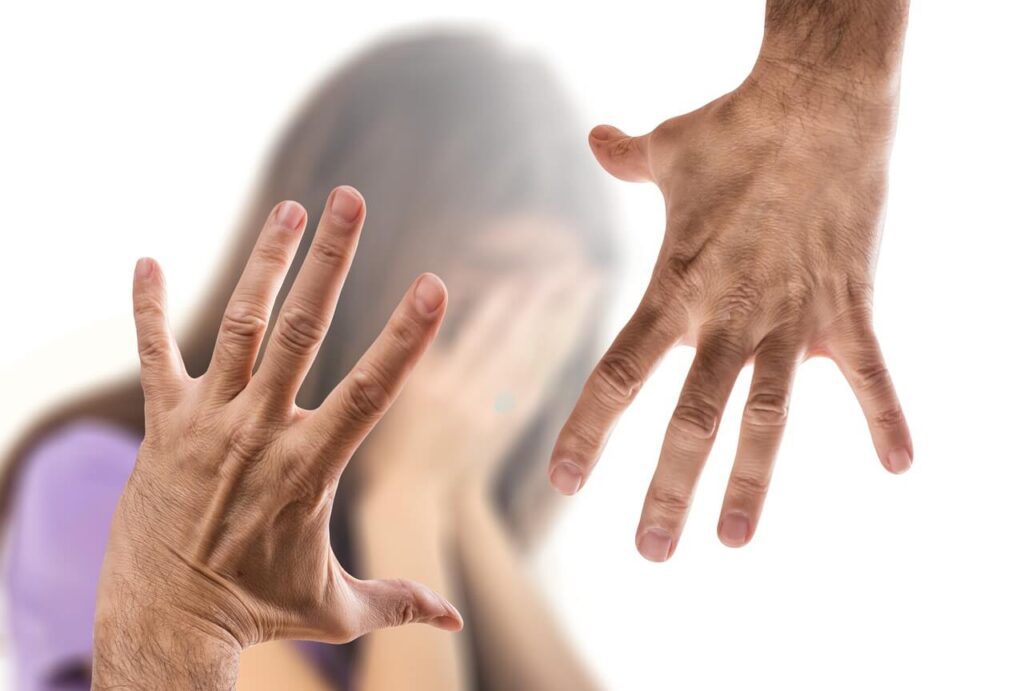Domestic violence is often mistaken to mean physical abuse with the spouse or partner as the perpetrator. However, the term is broad. By definition, domestic violence is abuse inflicted by a relative, family member, partner, or ex-partner.
It can be between a child and a caregiver, siblings, or two in-laws. It also includes
- Child abuse – when a caregiver or a person related to a child mistreats, neglects, or physically, sexually, or emotionally harms a child.
- Intimate partner violence – is abuse that occurs within a romantic relationship.
- Elder abuse – occurs in the hands of a caregiver or a person the elder trusts.
Domestic abuse is prevalent in American society. However, there is a limited understanding of its scope in the family setting. Statistics show that approximately 10 million people are recipients of abuse. The percentages indicate that one in every four women and one in every nine men are recipients of abuse.
Most of the time, abusers are unaware that they are abusive. Recipients of abuse may also not realize the abuse. Worse still, they may be aware but fail to take action against the abuse.
Types of Domestic Violence
Stalking
Stalking is a vicious pattern of unwanted attention, contact, and pursuit that instills fear and safety concerns in the victim. Through it, the stalker exerts power and control over a relationship. The act robes the victim’s sense of security because of the breach of their privacy.
Stalking is prevalent in intimate partner violence. One in six women and one in 19 men experience stalking. The abuser may stalk former and current partners. It involves terrorizing behavior like constantly watching, following, observing, and tracking the victim. It also encompasses cyberstalking, opening the victim’s mail, and encroaching on their space to obtain information or satisfy their twisted longings.
Psychological Aggression
Physical aggression primarily targets and damages the body. On the other hand, psychological aggression attacks the victim’s self-worth and emotional well-being. Research shows most dating relationships experience psychological aggression, with rates as high as 70% to 90% annually.
The aggression can last as long as ten years. It is a precursor for physical abuse. Examples of psychological aggression include:
- Ridiculing – intended to demean the victim’s self-worth
- Verbal threats – to make the recipient of abuse upset, uncertain, guilty, or inadequate
- Intimidation – is a threat that coerces the victim to do what the abuser demands
- Humiliation – berating someone to shame or embarrass them
Isolation
Like other forms of domestic violence, isolation is a tool for exerting dominance and control. It robs the victim of any support and keeps loved ones from finding out the magnitude of the abuse. Isolation can be physical, emotional, or social. It causes the victim to become dependent on the abuser.
Physical Isolation
In physical isolation, the abuser withholds physical touch and other physical needs, making the victim feel unloved and unworthy. It also increases their insecurities, self-guilt, and self-blaming. The abuser can verbalize the reason for acting cold or distant to manipulate the victim into taking fault.
Social Isolation
The abuser can also isolate the victim from loved ones – friends, family, and colleagues by restraining their interaction. They can also accomplish this by intentionally damaging the victim’s reputation. The abuser
- Prevents the victim from connecting, hanging out, or interacting with loved ones or limit or dictate the terms of engagement
- Restricts the victim from going outside the home. They may have a strict schedule of where the victim goes after work or install a tracker to monitor the victim’s movements.
- Constantly checks to find the victim’s whereabouts.
- Shares private photos and videos of the victim online to damage their reputation.
- Maligns the victim to friends, family, and loved ones
- Controls the victim’s phone, internet, car, or other mobility aids use
Emotional Isolation
In emotional isolation, the abuser refrains from connecting emotionally with the victim. They act distant to punish, torment, or control the victim. The recipient of abuse gets manipulated into blind loyalty because they want to avoid the resulting emotional neglect.
The victim can willfully isolate to avoid people probing and noting physical signs of abuse like bruises, swelling, black eyes, or a broken nose. They may also hide because they feel ashamed, depressed, or guilty over their abusive relationship.
The victim may feel like it is their burden to bear. They may believe they triggered the abuse. They could also not want people to feel sorry for them and put up a facade or avoid the social setting.
Emotional Abuse
Through emotional abuse, the perpetrator asserts power through emotionally manipulative patterns. The abuser’s goal is to
- Instill fear and guilt,
- Undermine the victim’s feelings,
- Diminish the recipient’s self-worth
- Take away the victim’s emotional independence
Emotional abuse includes
- Insults to demean and degrade the recipient of abuse.
- Hyper-critical judgment – that passes off as sarcasm, humiliation, and ridicule.
- Boundary invasion – the abuser wants to rush into a commitment despite the victim’s feelings or desires or invade your private space.
- Possessiveness – the perpetrator gets unreasonably jealous and guards the victim’s moves, relationships, work, and behavior to control outcomes.
- Manipulation – the abuser withdraws attention when wronged, ignores or excludes the victim, guilt trips the victim into submission, and casts self-doubt.
- Gaslighting – causes the recipient of abuse to doubt their reality, perception, judgment, and sanity.
- Dismissing or ignoring the victim’s feelings by downplaying, mocking, and showing indifference.
The perpetrator never acknowledges fault or takes the blame. They always attack the victim for such insinuations citing sensitivity or craziness. They are indifferent to the victim’s feelings.
Financial Abuse
Financial abuse is common in every domestic abuse situation. It does not occur as an isolated incident. Typically, financial abuse is a reinforcement of other abusive tendencies.
In this form of abuse, the perpetrator restricts and regulates the flow and use of finances to assert control.
The coercive control limits:
- The victim’s present and future freedom
- Infringes on victim’s choices
- Increases the victim’s dependence on the perpetrator
- Humiliates and reduces the victim’s self-worth
Sexual Abuse
Rape, molestation, and sexual harassment are all forms of domestic violence when the abuser is a partner, ex-partner, relative, or close family member. Perpetrators use sexual abuse to gain control. They use force, threats, and emotional manipulation.
Sexual abuse causes short-term or long-term psychological issues such as:
- Post-traumatic stress disorder (PTSD) – the victim relieves the ordeal through flashbacks, intrusive memories, and nightmares.
- Depression – causes persistent sadness and lack of interest in activities of daily living, suicidal ideation, hopelessness, guilt, and despair.
- Anxiety disorders – whenever they encounter people or situations that remind them of the perpetrator.
- The victim dissociates from the trauma for years, making them vulnerable to dissociative disorders in later life.
- Victims can pick up maladaptive behaviors like substance abuse, emotional eating, promiscuity, and reckless living to help them cope.
How to Identify A Recipient of Domestic Violence
The person receiving domestic violence goes through immense psychological trauma, mental and physical distress, and emotional turmoil. Abusers condition their victims to acclimatize to the abuse. Thus, the victim may not even realize they are in a toxic relationship with a loved one.

If you suspect your loved one or friend is experiencing domestic violence, these are some tale-tell signs.
Bruising
Cuts and bruises are evidence of physical violence. They occur in unexpected places too. If your friend or loved one is covering up with clothing or makeup, they cannot disguise swelling, cuts, and redness.
Behavior
Someone in a violent relationship will be apprehensive, agitated, and tense because of their traumatic experiences. You may also notice withdrawal, and unusual silence, especially if they are talkative, absent-mindedness, substance abuse, and sadness. They may be isolating more by not showing up to social functions or only attending when they are with their abuser.
Children will become fearful, cry, and act awkwardly in front of their abuser. Nightmares because of emotional suppression and dysregulation are also common in children. They will also act out, isolate, struggle in school, or become delinquents to cope with their internalized trauma.
Excusing their Abuser
Sometimes it is evident that your friend or loved one is in an abusive relationship. However, they always make excuses for the perpetrator. Victims develop a trauma bond with the abuser. The unhealthy psychological attachment causes them to sympathize with the abuser and excuse the abuse. They learn to blame themselves for the abuse and justify its occurrence.
Limited Control Over Finances
Spouses or partners facing financial abuse have no control over their finances. They may give all their earnings to their partner or have limited spending despite thriving financially. Their abusive partner plans, coordinates, budgets, and determines the use of money in their household.
Living in Constant Fear
Your friend or loved one is deathly afraid of their partner. They act differently because they fear the consequences of their action. Children will also become apprehensive in the presence of their abuser. They lose their confidence, avoid eye contact, fidget, or even cry when they face their abuser.
Click here for more on Trauma Therapy.

